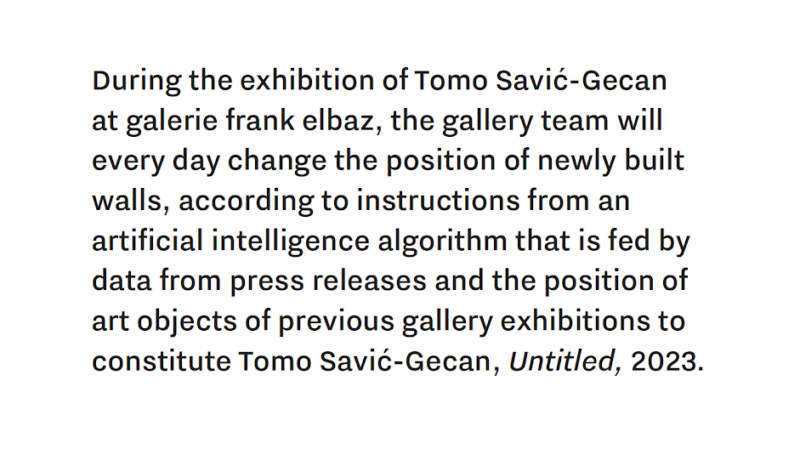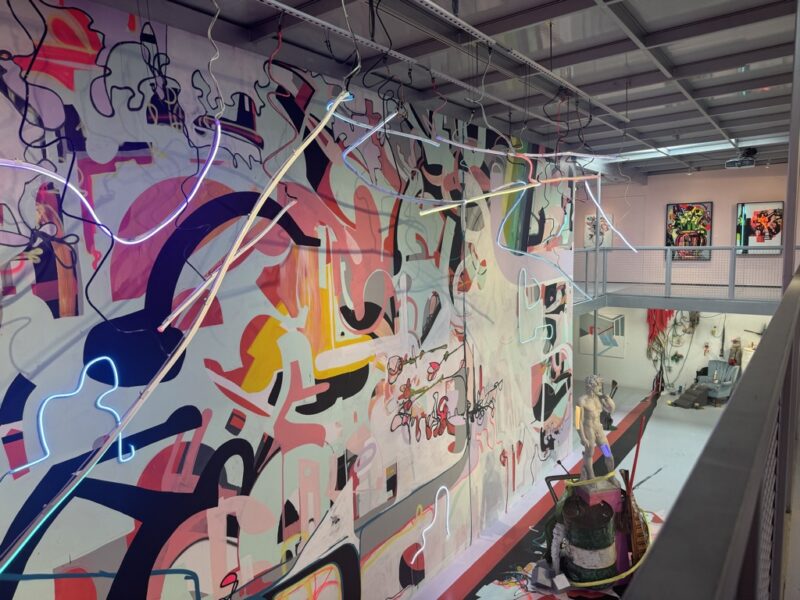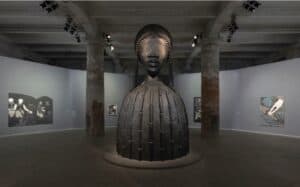The Spanish Pavilion at the 57th Venice biennale this year features an installation by Jordi Colomer which explores the layered nuances of Migration and Nomadism taking viewers on a journey. The work questions society’s ideas of what it is to be nomadic, when (if ever) is migration is acceptable; how are cultures, nations and dictatorships formed and what are the effects of forced movement.
I sat down with the pavilion curator Manuel Segade, one of the leading curatorial voices of Spain to ask a few questions…
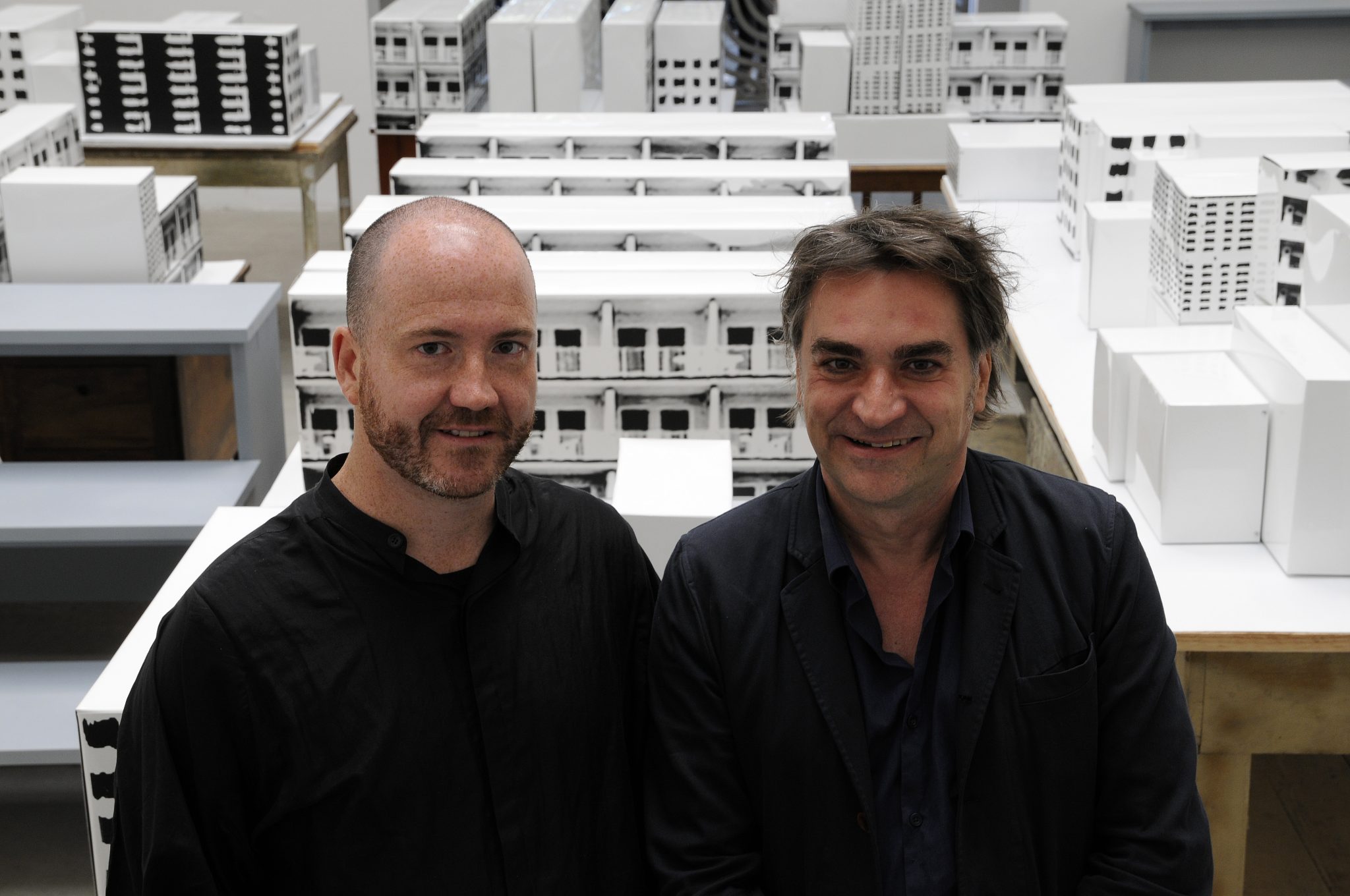
Jordi Colorer and Manuel Segade In the pavilion Credit Claudio Franzini
Can you describe for me how & when you started to work with Jordi Colomer; from the selection process w/Spain up to the curation of the pavilion? How long did the whole process take from beginning to end?
We’ve been working together since 2011, in a collective exhibition I curated in Cataluña. Then we worked together again in two other group exhibitions in Barcelona until he was selected by a committee as one of the four candidates to present a project for Spanish Pavilion. We worked all along last summer to prepare our proposal and we presented it the 1st of September 2016. We knew about our selection around the 15th of October. Less tan 7 months to work on execute it.
Broadly speaking, how would you describe your curatorial approach?
Jordi is one of those artistas that is playful and works through stimuli: a lot of dialogue, a lot of references, a lot of shared films and readings and finally a clear approach to the space. I’m a relational kind of curator: I like just to build the frame for a discussion to tke place and to try to take the artist out of a confort zone. Then, writing is for me the way of making our relational process to be understandable to all.
The whole idea of nomadism has become so prevalent in our modern-day society especially in Europe with the EU migrant crisis etc we have in many ways become somewhat desensitized to the issue. Colomer’s video work left me with the feeling that we are still very uncertain about where we are headed, perhaps we will not arrive or do not need to know the destination. The title (Join us!) suggests that there is an expectation from the visitor; can you elaborate what (if anything) is that?!
Of course this installation is done to be participative. The grades/stairs all around it make that the audiences are shown or exposed as blatantly as the video pieces on show. Once you begin to sit around, you are part of the exhibition and at the same time you get involved in the (fictional?) movement whose actions are documented in the videos. Once you are out of the exhibition you are contaminated with the spirit of that movement. I remenber Adrian Searle understanding the huge ships next to the Giardini, that any spectator can see from the entrance of the Spanish pavilion, as part of our exhibition suddenly: those movable cities of a new kind of citizenry.
Jordi Colomer’s main inspirational interests are said to be sculpture & theatre; here we are presented with video which can be challenging to exhibit (i.e. if the audience isn’t instantly captivated as w/ a painting, sculpture performance, etc.) what (if any) were some of the obstacles you faced in curating this exhibit which has been described as an ‘installation within an installation’?
The idea is an installation of installations… like a tale of tales, where all those useless actions compose a new constellation of meanings of what future society might be. For me, the most interesting and challenging thing has been to articulate an evironment where that can happen as a contamination… to make the audiences going from national pavilion to national pavilion –crossing nations’ frontiers once and once again- being conscious of having joined us already…
There are a multitude of things society needs to do to improve many would say that drastic measures are needed …a new level of consciousness needs to be achieved in order to strive for inner peace prior to changing any external issues- how possible in your opinion is this & how far away are we globally from an enormous backlash to a general state of unconsciousness ?
I think art and representational strategies are fundamental political weapons because they fabricate precisely new or alternative political imaginagions. As a citizen I’m implied in social movements and in different associations. As a curator and director of CA2M, a public art museum, I truly believe in the force of art as a way of opening up minds and making them converge as a meaningful and critical community.
What do you think is the primary challenge facing the Venice biennale today?
To understand that those 19th century conditions are a potential to speak about today. The aspirational market quality of the current edition I think marks the highest neoliberal point of the biennial, at least from my generation memory. I think the biggest problema is this. That without even talking about the anachronism Venice constitutes by itself.
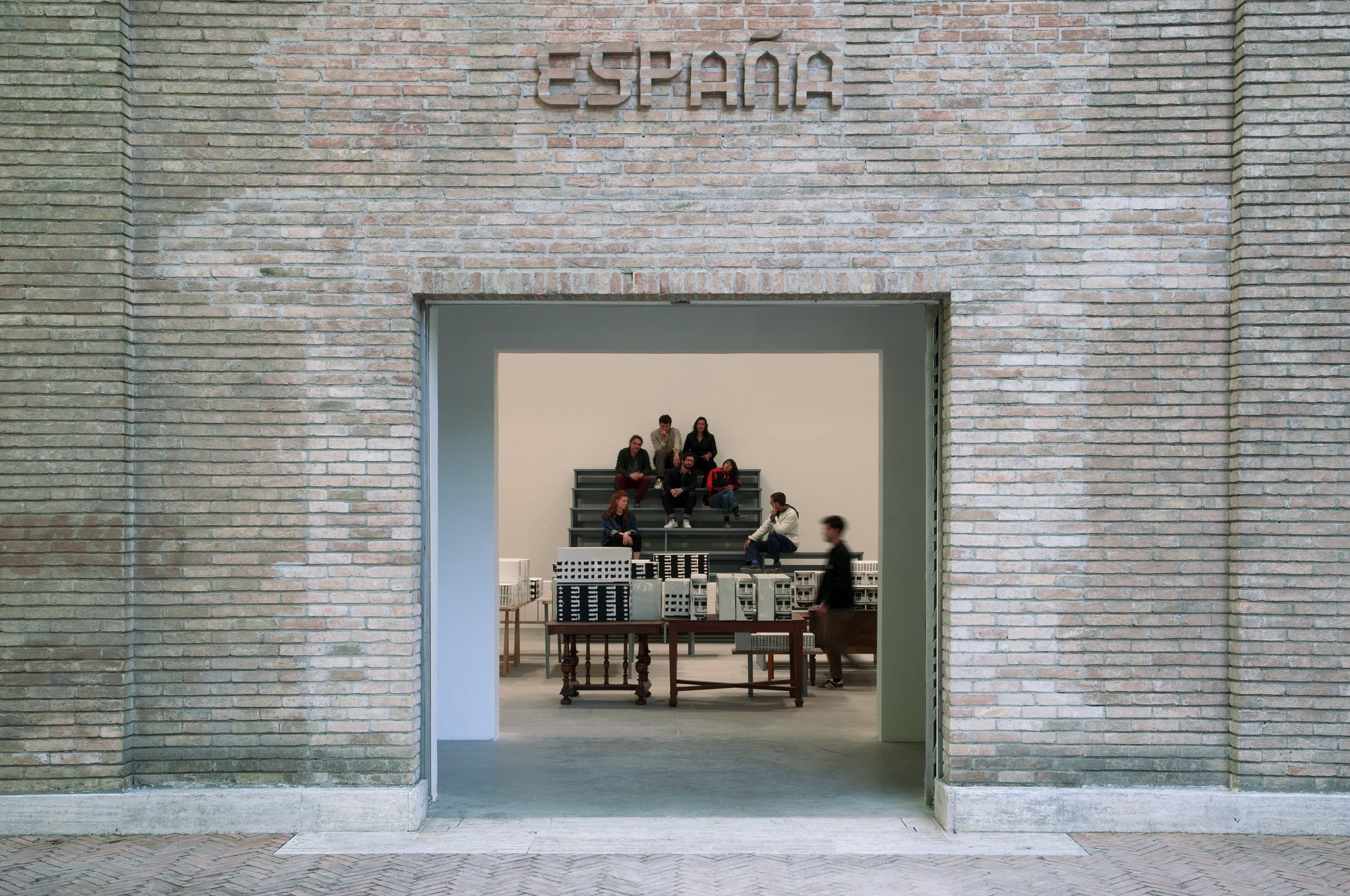
¡Únete! Join Us!, by Jordi Colomer curated by Manuel Segade. Installation shots by Claudio Franzini
How Strong is the pressure on artists these days to make saleable works – for fairs, for example?
Artists in the South (PIGS in European terms) suffer of the worst life conditions since I can remenber. Their market is not huge because our galleries are not as strong as the anglosaxon ones in the big market. I don’t like to victimize but you can tell me as a critic of journalist how many Spanish artist’s acced the big contemporary art fairs worldwide and you can also answer yourself to the structural gap between North and South…
You are an Academic and lecture at some of the most prominent institutions – What are the biggest challenges art institutions, are faced with today?
The biggest issue is to offer a relevant experience to the overstimulated contemporary audiences today. To keep on being there as instruments of political innovation in the representational field I see as our biggest concern.
Do you have a preferred Medium of Artwork to work with?
I can tell what I normally don’t work with: painting. I think we had enough of 500 years of that hegemonic médium which fullfills the market expectations anyway.
What, in your opinion, are the three best museum or gallery exhibitions of the last decade and why?
I don’t like lists nor highlights… contemporary art was born precisely in the field of minorities and opening up the terrain for feminisms, decolonial strategies, queer politics… So I think the most important experiecnes in contemporary art have been experiments in institution making like the VanAbbemuseum under Charles Esche’s team, Reina Sofía Museum in Madrid under Manolo Borja or CA2M before me, under Ferran Barenblit, also in Madrid.
What are the currents in contemporary art that have you the most excited when you’re out exploring now?
I feel curious about a lot of things but I think performative practices are getting into an impressive level lately.
In your opinion, are there too many Art fairs now days ?
There are a lot, but why not? They satisfy the expectations of the local artistas and galeries and most importantly they stimulate the different markets at a different scale…
What advice would you give someone starting out w/ aspirations to become a curator?
To read a lot and to see a lot of art. After teaching curating so much along the last few years, it’s not as obvious as it appears… Overall young people seem to know too much about the structure of the system of the arts worldwide but the most important thing is to know about art and ideas. If not, they will work for the system and not for the art in the future…
Commitments / Current projects:
I’m the director of the CA2M Centro de Arte Dos de Mayo in Móstoles, in the outskirts of Madrid. We are preparing an amazing exhibition about radical performance centered on Vogue for November and a retrospective of Vasque performer Itziar Okariz together with Kunsthaus Baselland for October. Next year we will be 10 years old as an institution. Our program will be exploding, from our architecture (we’ll finish the Accupuncture by Andrés Jaque office) to our website.
What are you working on at the moment? & How is Manuel Segade’s time divided?
Mostly in that social choreography exhibition, centered in Voguing, but also in the Escuelita, the Little informal school of our museum, which I also cocurate with Julia Morandeira. My time just got back to my private life: After Venice, I finally have my weekends back to myself!
How does your interaction with an artist evolve from your initialencounter with their work, to studio visit, & then to the realization of a museum exhibition?
I try normally to know the people I work with. Affect is my terrain, where tight laces of meaning can be created. I need to spend time with them, person to person.
How do you share & store ideas?
Through my projects and texts. My archive is developed privately, in between books, films, papers, notes and other fragments of discourse that move and flow on the shelves of my home.
What situations might occur that would cause you to cancel/rethink an exhibition? Has this happened to you frequently?
It never happened before.
With a tremendous amount of accomplishments and achievements are you able to identify which have been the most rewarding & why?
The most rewarding projects I’ve made are the ones which stablished an active community around them. My aim has been always to change the world through art. When at least I can contribute to the critical patterns in thinking in society and to create stronger links amogst the elements which compose an art scene… I feel that is what curating is about.
How long is the list of Artists that you want to work with and have not yet had the opportunity & how frequently is this list changing?
It changes and mutates all the time like my practices and like art itself! There are some artists which I’ve never been able to work with because of the scale of their projects… But I’ll never desist. I love long term relationships in the profesional and affective way: long aliances, coalitions or friendships processes.
Will you be taking any Summer Holidays this year ?
I need them! As I consumed part of them in Venice, I’ll catch up with a perfect calm two weeks in August. Looking forward…
The 57th Biennale di Venezia ‘VIVA ATE VIVA’ runs through November 26th 2017 www.labiennale.org/en/art


